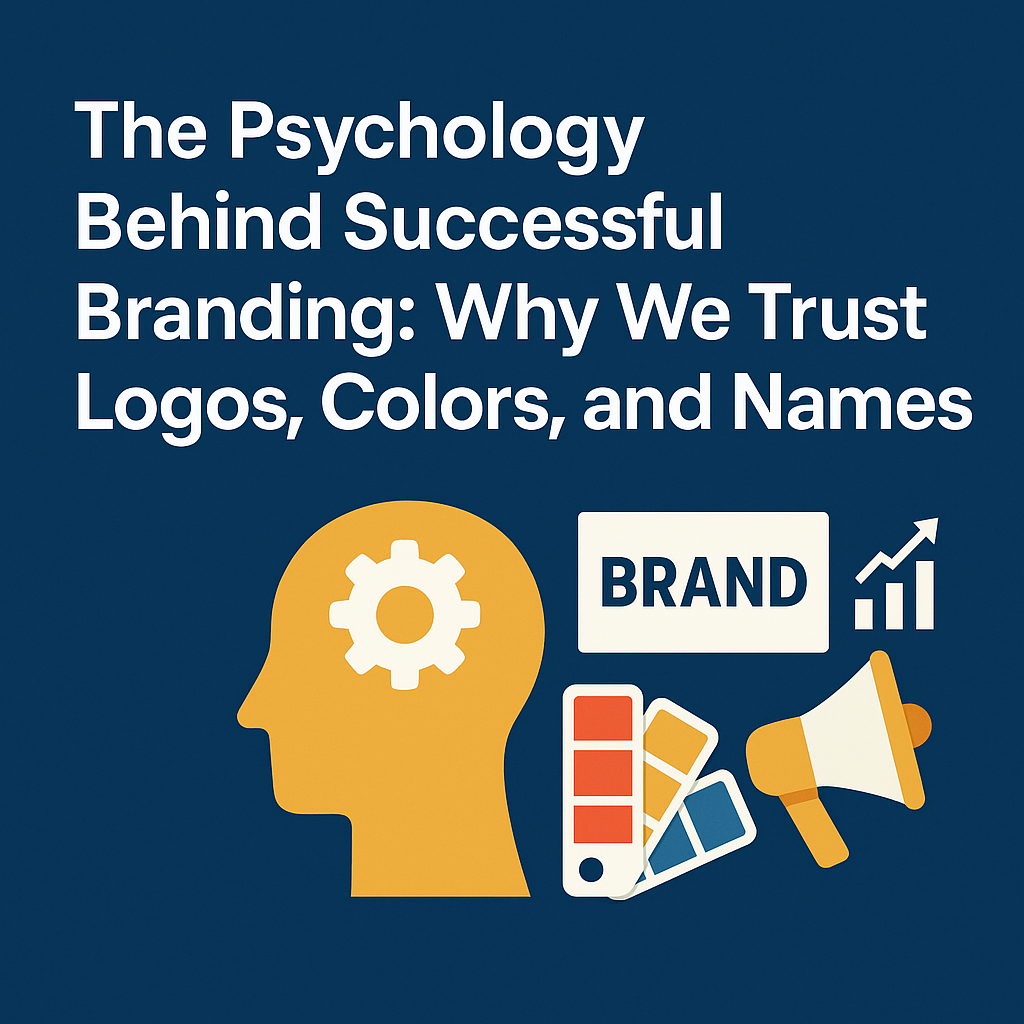Discover how logos, colors, and brand names influence customer trust and decision-making. Master the psychology behind successful branding.
Introduction
Have you ever wondered why we instantly recognize the golden arches of McDonald’s or feel a sense of trust when we see the blue and white of Facebook? It’s not just great design — it’s psychology in action. Branding is more than a name or logo; it’s how people feel about your business. This blog will explore the fascinating psychology behind successful branding, and why certain logos, colors, and names stick in our minds and earn our trust.
1. The Power of First Impressions
According to a study by the Missouri University of Science and Technology, it takes users less than 0.2 seconds to form a first impression of a website or logo. That means your brand’s visual identity must create impact instantly.
Pro Tip: Use clean, simple designs with a clear message. Avoid clutter.
2. Color Psychology: More Than Just Looks
Colors trigger emotions. It’s not just about looking good — it’s about feeling right.
- Red creates excitement, urgency, and passion (used by Coca-Cola, YouTube).
- Blue conveys trust, reliability, and calmness (used by Facebook, PayPal).
- Yellow evokes happiness and energy (used by McDonald’s, Snapchat).
Research by Colorcom shows that up to 90% of snap judgments made about products are based on color alone.
Pro Tip: Choose colors that reflect your brand’s values and appeal to your target audience.
3. The Role of Shapes in Branding
Different shapes also play into psychology:
- Circles and ovals suggest unity and community (think Pepsi, BMW).
- Squares and rectangles suggest stability and balance (like Microsoft).
- Triangles indicate power or innovation (like Adidas).
These subtle cues affect how customers perceive your brand before they even read a word.
4. Names That Stick
A memorable name is short, relevant, and often has a rhythm or unique twist.
- Google, Nike, and Netflix are easy to say and remember.
- They often create their own brand vocabulary (“Just Do It”, “Google it”).
According to a report by Nielsen, brand names influence buying decisions by over 70% when consumers are choosing between similar products.
Pro Tip: Aim for names that are short, easy to pronounce, and emotionally resonant.
5. The Trust Factor: Why We Believe in Brands
Familiarity breeds trust. The more we see a brand, the more we associate it with reliability — a phenomenon known as the mere exposure effect.
Successful brands:
- Show up consistently (same logo, tone, and message)
- Deliver quality experiences
- Engage emotionally with their audience
Pro Tip: Be consistent across all platforms — from your website to your social media.
6. Case Studies: Brands That Got It Right
- Apple: Uses clean design, minimal colors, and a logo that’s instantly recognizable. Apple creates a brand experience that feels premium and intuitive.
- Nike: Combines a bold logo, empowering slogan, and emotional storytelling.
- Coca-Cola: Leverages red color psychology, iconic typography, and nostalgia-driven ads.
These brands apply psychology without the consumer even realizing it — and that’s the key.
7. How to Apply This to Your Own Brand
Whether you’re a startup, freelancer, or small business owner:
- Think about how you want your audience to feel.
- Choose visuals and words that reflect that emotion.
- Keep your branding consistent across every touchpoint.
Pro Tip: Create a mini brand guide (logo, color palette, font, tone of voice) and use it everywhere.
Conclusion
Branding isn’t just design — it’s emotional psychology. From the colors you choose to the shape of your logo and the words you use, every element sends a message. If you understand how the brain reacts to branding, you’ll create a stronger, more trusted connection with your audience.
Sources:
- Missouri University of Science and Technology (web usability study)
- Colorcom (color influence research)
- Nielsen Consumer Report (brand name impact)
- Entrepreneur.com & Forbes (branding psychology insights)
Next Up on Brandweb.net:
Stay tuned for our next post — “How to Build a Brand From Scratch: A Step-by-Step Guide for Beginners.”
Written by Zain Ashraf | Brandweb.net

